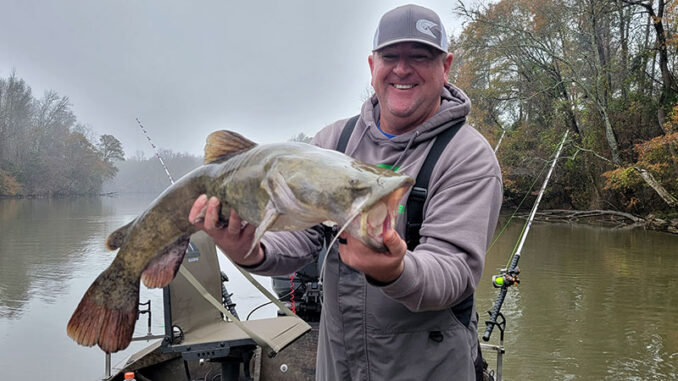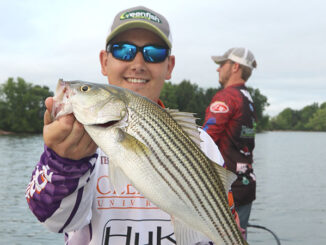
The Wateree River is full of big, hungry flathead catfish
Flathead catfish don’t mind the cold weather. And that’s especially true on the Wateree River, where these fish stay hungry and willing to bite.
But catching them takes some work, mainly in the form of persistence, said Capt. Jason Wolfe of Wolfe’s Guide Service.
“River fishing for catfish is one of the simplest types of fishing you can do. It doesn’t require much more than an anchor, a fishing rod, and bait. But if you want to target flatheads, you need to have a little more patience than fishing for blue catfish,” said Wolfe.
That’s true for a number of reasons, he said. Flatheads are more solitary than blue cats. They’ll also stay tighter to cover and aren’t fond of straying, even for a nearby chunk of bait.
“They will eat cut bait when they’re really hungry, but they very much prefer live bait more. So unlike blue cats, which will eat either one, flatheads are more picky. Even to the point that they’ll simply pass on eating cut bait at all sometimes, even when it’s right in front of them,” said Wolfe.
And that’s one reason they are more difficult to catch.
“The Wateree River has plenty of flatheads, but not as many as it has blues. And the blues just congregate together in bigger numbers. So when you find one blue, you’ll find more. But flatheads, you can find one and it’ll be all alone. So if you’re targeting them and you catch one, you’re probably not going to see another one in that spot,” he said.
When he’s specifically targeting flatheads, he uses live bait from the river, anchors within range of some heavy cover like downed trees and logs, then puts his bait right in the thick of it.
“You’ll catch some blues this way, because they’ll hang out in these same areas. But to really target the flatheads, you need to get as tight to that cover as possible. Blues will come out away from those areas to chase bait when it is present, but flatheads will usually sit much tighter to that debris, even when they’re hungry,” said Wolfe (803-487-3690).
Once the bait is in the water, Wolfe suggests placing the rod in a rod holder and leaving it in place until the fish hooks itself.
“Use circle hooks, and let them do their job. Don’t try to set the hook yourself. Just wait for the rod to load up, then pick it up and reel,” he said.





Be the first to comment